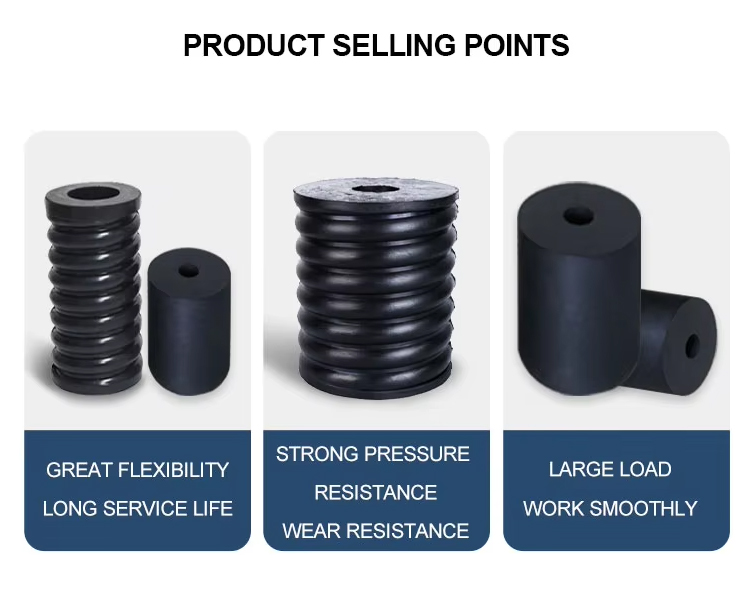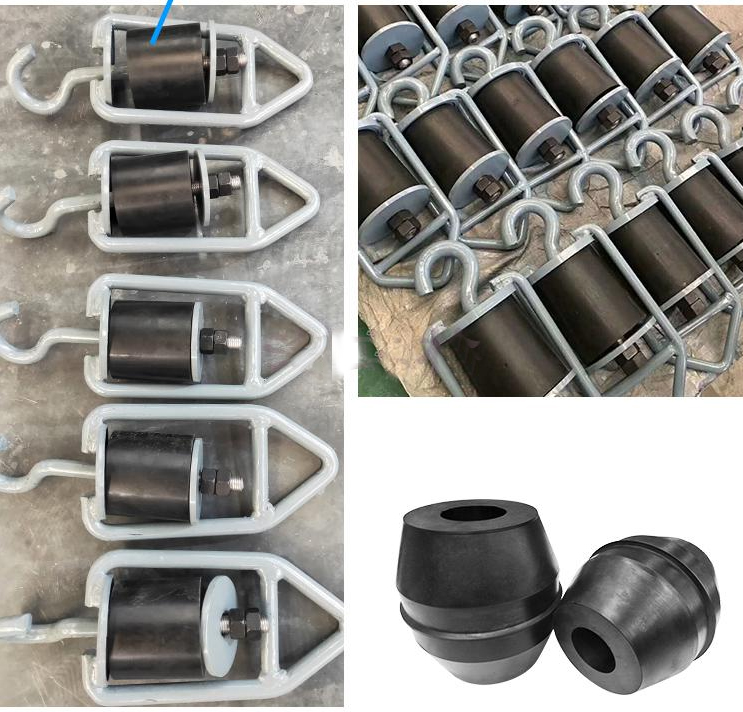Rubber spring is a basic and common shock-absorbing buffer component. It has a simple structure but has a wide range of uses. Rubber springs can be seen in screening machines, feeders, and vibration equipment.

1. High Damping Capacity: Rubber's inherent damping properties help dissipate energy, minimizing the impact of shocks and vibrations.
2. There is no rigid structure to block, and the shape of the rubber spring is not limited;
3. High internal resistance, stronger impact resistance and spring reset ability;
4. Good water resistance, insulation and sound insulation effect;
5.Customizable Design: Rubber springs can be tailored to specific load and deflection requirements, offering flexibility in design.

1. The natural frequency of the rubber spring can hardly be lower than 5Hz; (the natural frequency is related to the stiffness coefficient of the spring itself and the mass of the object it bears. Here, the natural frequency of the rubber spring is difficult to lower. Most of the reasons come from the stiffness coefficient of the rubber spring itself ,)
2. It is not resistant to high temperature and oil pollution, and is easy to corrode and weather.

The damping capacity of the rubber spring is not only related to the shape, but also related to the hardness of the rubber. The higher the hardness, the greater the stiffness, the stronger the bearing capacity, and the lower the hardness, the smaller the stiffness, the weaker the bearing capacity. The weight, vibration and usage of the vibration equipment should be considered comprehensively.


Spring material: rubber or composite rubber
Inner diameter: 18-80mm
Outer diameter: 50-300mm
Free height: 50-245mm
Maximum load capacity: 208-862kg
Compression rate: 20%-30%
Operating temperature range: -20°C to +40°C
Application: Mainly used in various vibrating machines, such as linear vibrating screen, mining vibrating screen, vibrating feeder, vibrating platform, vibrating mill, etc.
Address:China,Yanjin county forest park gate to the west 1000 meters north road.